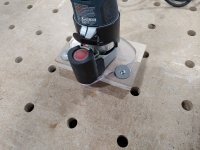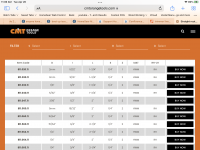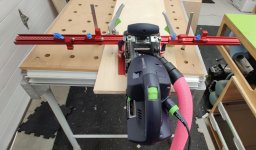Crazyraceguy said:
As fantastic as the MFK700 is, I don't think it could ever be an "only router" for anyone.
In the vertical configuration it is too limited. It is great for edge profiles and such, especially well balanced because of the offset of the base/handle, but depth adjustment is nowhere near what some of the other trim type routers have.
The horizontal base/s are where it really shines (in my opinion anyway) but if that is not important to you? again not ideal as an "only router".
In my mind, there is no such thing, but some people don't have the same versatility requirements.
The OF1010 is close, its only limitation is its size/power. If that is not a priority, I would say that it is the way to go.
The OF1400 effectively the same thing in larger form. It is heavier and more cumbersome for the smaller tasks though, so not ideal for everything either.
For me, even a perfect router is not enough. I have some setup for specific tasks and they only ever do that one thing, but again, not normal.
Yes, the Jack-Of-All-Trades router (or about any other tool) is a real unicorn (anyone else tired of that word yet?).
But, I was hoping to replace my Trim router all together....
The horizontal base is the only one I've actually used. I've switched the bases back and forth, and figured out how it all worked. But edge trimming was the priority. I am looking forward to using the vertical base. Although, like you, I can see me picking up a second 700 some day to keep on vertical, one horizontal. But, I certainly can't justify that cost yet.
Honestly, I still have my Dewalt 610, and a 618, and a Ridgid full size and trim routers... as well as my big 3 1/2 Bora motor in my router table. There is bro shortage of spinny things hanging about my shop.
I am thinking vacuum as my next big Festool purchase (not including accessories, of course)... But, that's just because the vacuum clamp system is being discontinued (which makes me a little sad. LOL). Damn Festool is like heroin for grown ups.
So, thinking out loud.... The more I think about it, it is not the actual range of motion, but more the relative position of the collet to the opening in the base.
Two options I can think of for modifying the vertical base for more depth adjustment (for use with some of the longer bits). First, would be making rods and a height adjustment bolt, just like the ones Festool makes, only longer. You'd still have to screw/unscrew the knob to get the full range... That might be kinda annoying.
But, second, I was thinking you could make a 'spacer' to push the base a little further away from the collet.
This second option has me thinking! It's probably not anything I could make myself, but something I will be contemplating a great deal.... I figure if you could make a thick spacer, maybe 1/2", 3/4"... Or in Festool terms, I believe that's 12 and 18 mm. One side would have sockets for the rods, the other side, rods to go into the base. I dunno... It's a thought?
Oh, what if it was an adjustable sleeve? Hmmm... I will really have to study this one a bit!
Of course the toughest design element one would have to get around, are the alignment rods. Which really are some of the biggest advantage to the 700 system.








